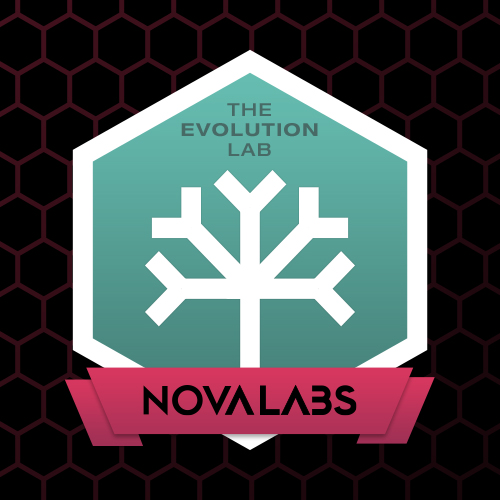 I am excited to finally be able to share this resource with you! I’ve been working as an advisor on the project for several months and have seen it evolve from rough scripts to its gorgeous finished project. What is it, you ask? It’s the latest online lab from the brains at NOVA—the topic? Evolution, of course!
I am excited to finally be able to share this resource with you! I’ve been working as an advisor on the project for several months and have seen it evolve from rough scripts to its gorgeous finished project. What is it, you ask? It’s the latest online lab from the brains at NOVA—the topic? Evolution, of course!
Nova Labs are places where “citizen scientists” and classroom students alike can engage with “real world” science via a digital platform using a series of videos and games. The Evolution Lab is the sixth in what will no doubt become a long list of science labs. Preceding it were labs on sun, energy, clouds, RNA, and cybersecurity (find them all here).
As the video introduction (“Evolution 101”) explains, the purpose of this lab is to explore the tree of life and to understand the amazing mechanism behind it. Throughout this gorgeous introductory video, some evolution experts pop up, such as science historian and Darwin biographer Janet Browne, and Joel Cracraft, the guy who literally wrote the book on phylogenetics. Although it needles my pet peeve—using the phrase “scientists believe that…”—Evolution 101 would be exhibit A in my case proving that something can be engaging and scientifically rigorous at the same time.
The Evolution Lab features the “Deep Tree”—an interactive digital learning tool developed by the Life on Earth project at Harvard University’s School of Engineering and Applied Sciences. Before the NOVA Lab, you could only interact with the Deep Tree at a few natural history museums around the country. Now, we can all climb around the tree of life and explore more than 70,000 species. My favorite way to interact with it is via the “relate” function, which lets you determine where on the tree you could find, say, the common ancestor of a short-beaked echidna and a large flying fox, when that common ancestor might have lived, and what traits that common ancestor might have had.
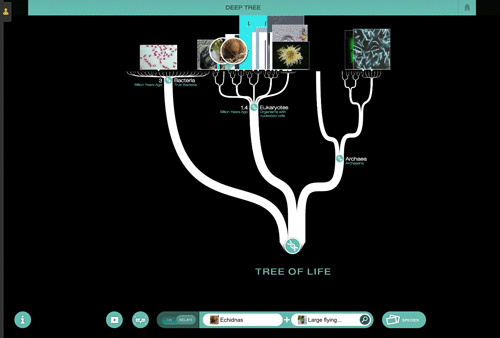 All the zooming around might give you a touch of motion sickness, but I have not come across a better way to impart a sense of how absolutely enormous and sprawling the tree of life is. True, it’s weighted a bit toward multicellular eukaryotic life, but there are representatives from both the bacteria and archea domains available to remind students that most life can’t be seen with the human eye. (A few of the games, too, feature the “little guys.”)
All the zooming around might give you a touch of motion sickness, but I have not come across a better way to impart a sense of how absolutely enormous and sprawling the tree of life is. True, it’s weighted a bit toward multicellular eukaryotic life, but there are representatives from both the bacteria and archea domains available to remind students that most life can’t be seen with the human eye. (A few of the games, too, feature the “little guys.”)
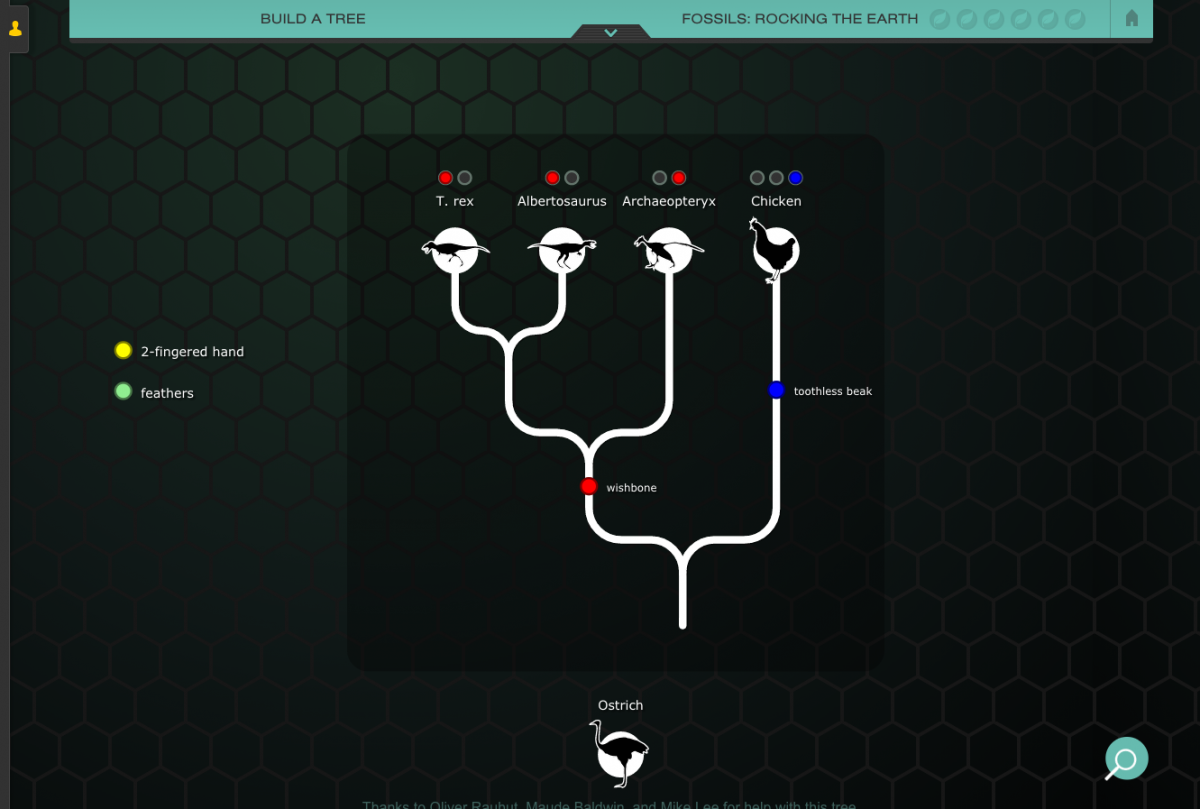 The Harvard team also developed the puzzle-based game called Build A Tree, in which players create their own phylogenetic trees from a set of species and a list of shared traits. The tree-building part of the Lab includes six different “missions” of three games each. A video introduces the mission topic, from mission 1 “Training Trees” to mission 6 “You Evolved Too.” One of the game's best features is that you can be wrong. Think Albertosaurus didn't have a wishbone? That Archaeopteryx is more closely related to T. rex than a chicken? Build the tree, apply the characteristics and see what happens! (Spoiler alert! It won’t work.)
The Harvard team also developed the puzzle-based game called Build A Tree, in which players create their own phylogenetic trees from a set of species and a list of shared traits. The tree-building part of the Lab includes six different “missions” of three games each. A video introduces the mission topic, from mission 1 “Training Trees” to mission 6 “You Evolved Too.” One of the game's best features is that you can be wrong. Think Albertosaurus didn't have a wishbone? That Archaeopteryx is more closely related to T. rex than a chicken? Build the tree, apply the characteristics and see what happens! (Spoiler alert! It won’t work.)
Another wonderful feature is that there is no one way to build a correct tree. Outgroups don’t have to be on the left, and more derived species do not have to be positioned on the right. There are a lot of built-in prejudices with tree-building that are tied to misconceptions, so it’s great that NOVA hasn’t reinforced them here. (More on tree-building misconceptions coming to Misconception Monday soon!)
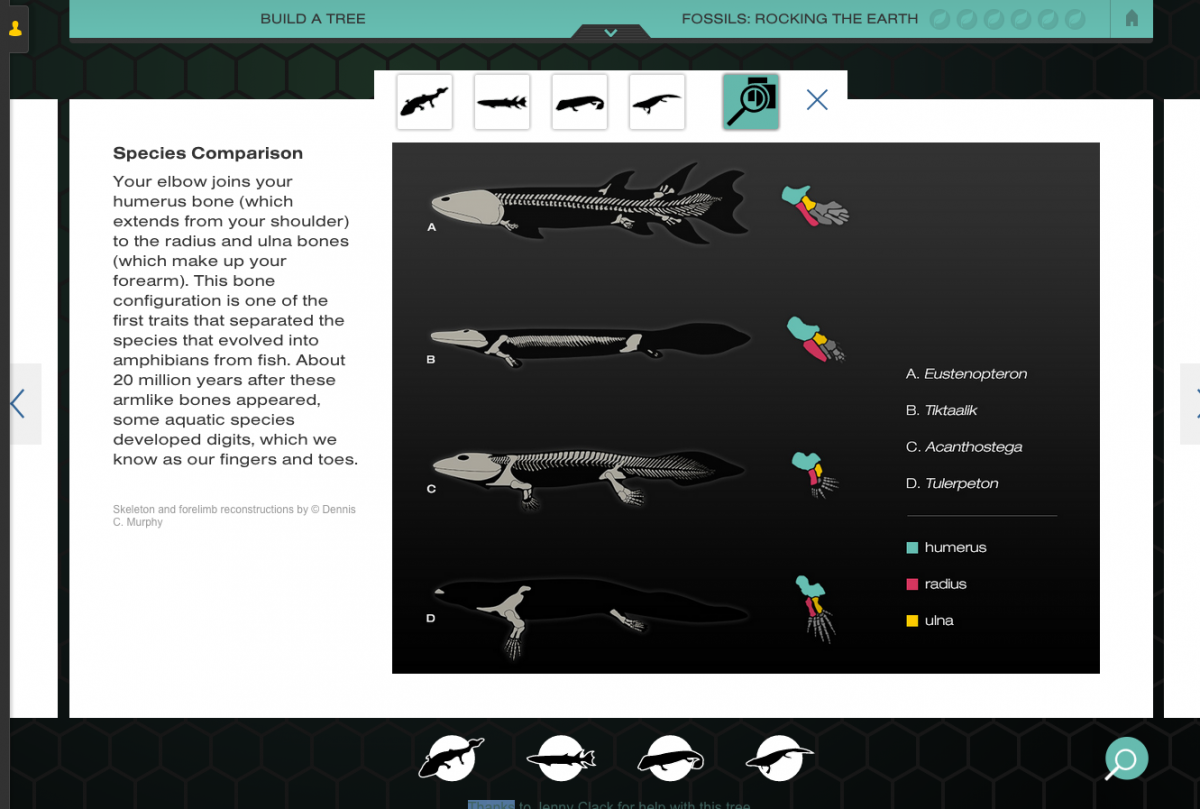 The trees themselves are built using morphological traits, genetic traits, or a combination of the two. I am biased toward morphological trees because they seem more *real* and tangible, but I appreciate that most investigations of modern phylogenetics involve genetics, so it would have been foolish to leave DNA out of the Lab entirely. One place for future improvement? The introductions for each game are not as rich as I’d like them to be. It’d be nice if each game had an intro screen laying out the goal of the game and the organisms and traits under consideration. It’d be easy enough to pull this information together into a worksheet, something I’m sure the NOVA team is considering.
The trees themselves are built using morphological traits, genetic traits, or a combination of the two. I am biased toward morphological trees because they seem more *real* and tangible, but I appreciate that most investigations of modern phylogenetics involve genetics, so it would have been foolish to leave DNA out of the Lab entirely. One place for future improvement? The introductions for each game are not as rich as I’d like them to be. It’d be nice if each game had an intro screen laying out the goal of the game and the organisms and traits under consideration. It’d be easy enough to pull this information together into a worksheet, something I’m sure the NOVA team is considering.
Another thing to note is that for now, new levels only unlock upon successful completion of previous levels. So, to get to the more difficult games, you will need to play your way up. If you plan on having your class do every game and every mission, plan on devoting a few class periods. The team is planning a teacher portal and more support materials, but an educator guide with correlated NGSS standards, a lesson plan, and a few additional resources are already available on the educator website. In addition, downloadable versions of the videos with discussion questions and a lesson plan are available on PBS Learning Media.
All in all, the NOVA Evolution lab is a rich resource that can help your students connect with evolution, to get it in a way that might not be possible otherwise. For the most part, misconceptions are avoided and even addressed head-on (you’ll notice in the intro that the narrator says natural selection is a mechanism of evolution, not the mechanism of evolution—woo woo!). The games are challenging and engaging, and zooming all over the tree of life is educational and fun at the same time.
So check it out, and if you use it in the classroom, please let me know how it goes!
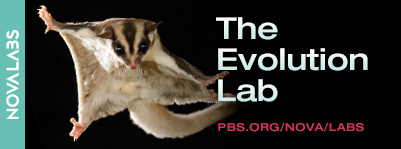
Are you a teacher and want to tell us about an amazing free resource? Do you have an idea for a future Misconception Monday or other post? See some good or bad examples of science communication lately? Drop me an email or shoot me a tweet <at>keeps3.

